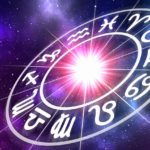Astrological beliefs have influenced several aspects of human existence and cultural development over the centuries. It’s a fascinating field of study involving the connections between celestial observations and terrestrial happenings. Astrology dates back to the 3rd millennium BC, with calendrical systems predicting celestial changes and cycles representing divine communications. Once considered a branch of science, Astrology reached a culmination point with the emergence of scientific concepts in astronomy. The theoretical basis of Astrology was challenged with predictions declared inaccurate by astronomical concepts in the 17th century.
Babylonian Astrology
To understand the astrological concept of Omens, it’s important to know the birth and the ancient world of Astrology. The archaeological remains of the ancient cities of Babylonia treasure in-depth details with comprehensive records of the origins of Astrology. The world’s oldest astrological tablets from 2400 BCE is available in this region. The practise of observing and recording the movements and the effects of celestial bodies began here.
Babylonian Astrology also is the foundation for Egyptian and Greek Astrological practices. Most of the Babylonian astrological frameworks also find a place in Western Astrology even today. In fact, Babylonian Astrology is the world’s first organized astrological system coming into existence in the 2nd millennium BC.
Omens in Astrology
Terrestrial events interrelate and interweave with supernatural influences. Astrology and the birth chart reinforces this fact, claiming the presence of omens during an individual’s birth.
Omens are the indications that foretell the future, also signifying the advent of change. Omens are famous to be divine messages from gods. Astrologers read these omens while predicting the happenings in an individual’s life.
Omens can be good or bad, depending on the way individuals interpret them.
Different cultures or different individuals interpret the same sign or indication differently. Astrology has the power to calculate future omens using the information of planetary transitions and other celestial cycles during a person’s birth.
Omens in Babylonian Astrology
Babylonian astronomers are famous for being among the first people to observe the heavens and map the pathways of celestial objects. Omens were also a prominent part of ancient Mesopotamian culture and religious life. Both the cultures had firm belief these omens were direct messages from their deities.
Complete details of omens were also developed on the lines of predictive astronomical events. Babylonians viewed the planets not as gods but, as messages and celestial representations of the gods.
Omens in Cuneiform Script
Cuneiform script is the ancient writing systems of Mesopotamia and Persia, surviving on clay tablets. Enuma Anu Enlil, the God of the sky and the God of weather respectively, are a set of clay tablets with complete detailing of celestial events and omens written in Cuneiform script.
Mesopotamia also preserves Enuma Anu Enlil through centuries and records the movements of the Sun, the Moon and other eclipses. These information and planetary weather are useful in modern astrological analysis to predict future events. Symbolic interpretations following astronomical observations are the prime aspects of modern astrology.
A Note on Calendar Astrology
The development of astrology and also the need to keep track of time of birth to make accurate predictions, maintaining a time cycle became critical. Different cultures developed precise systems to calculate and predict time cycles, making way for the development of astrological calendars.
The motions of celestial bodies and also those of the Sun and the Moon help formulate different calendars. Counting of days followed the phases of the Moon and lunar month came into existence. The concept of seasons entering the phase of the counting system enabled man to calculate the number of days for the recurrence of a season. This was the effect of the movements of the Sun. Hence, the Solar year and the Solar calendar came into existence.
Solar calendars were used in colder countries where the onset of winter was the most important factor of human activity. In hotter regions, lunar calendar became useful because travelling was mostly during the night. Tropical countries used lunisolar calendars because of warmer climate and frequent sky-gazing.
Julian and Mayan Calendars
This was the origin of the Roman calendar that takes us closer to the solar year. The lunar calendar had extra months to make adjustments. According to Caesar’s time, this calendar by Julius Caesar is three months beyond in relation to the seasons.
The Mayan calendar had 365 days, dividing them into 18 months with 20 days each. Additional 5 days at the end of every month are unlucky ones.
The Jewish Calendar
This combines both solar and lunar cycles and is a concept following the Babylonian astrological system. There were 29 or 30 days and, alternate months had an extra day. This was also important to maintain the balance with the solar year.
The Conclusion
Compiling calendars is a sincere attempt to predict and record the passing of time and study their effects. The day and month are the only two measures of time available. Outer space is the most mysterious part of human existence. Hence, the study of celestial objects forms the core aspect of astrology, astronomy and various astrological calendars.














